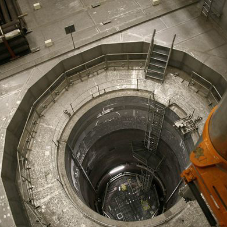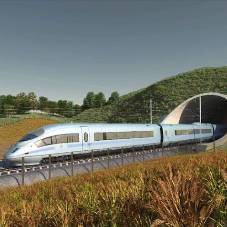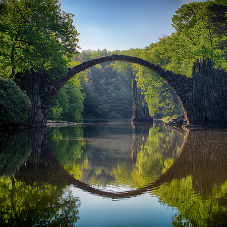In 1972 the Austrian Government began construction on a nuclear power plant in a small municipality named Zwentendorf, on the banks of the river Danube. The plant would take six years of construction and was ready to commence operation in 1978. Until a public referendum voted against the use of nuclear power in Austria. To this day, Austria has never had any nuclear power stations operate on its electrical grid.
The Austrian nuclear power referendum is often cited as a success story for grassroots political movements. But when looking into the details of the referendum, it’s difficult to determine the reasons behind the victory for the anti-nuclear movement.
As reported by The New York Times on November 12th 1978, a week after the referendum:
“Before the referendum on what was to have been Austria’s first atomic power station, Mr. Kreisky had vowed to resign if the voters turned down the project.”

*Austria's Zwentendorf Nuclear Plant
This is significant as the referendum was not just a question on whether the country should adopt nuclear power, but also a vote of confidence in the leadership of the country. However, regardless of the cause, the idea of nuclear power continued to lose popularity in the public sphere over the next few decades.
One quite clear and obvious reason for this is because of high profile disasters. Just a year after the Zwentendorf referendum, the Three Mile Island reactor went into meltdown. Radioactive substances were released into the surrounding area. It’s hard to say what the true impact of the disaster was, there have been many studies reaching varying conclusions, some say that the amount of radiation the local populace was subjected to was equal to an X-Ray, other studies say that there was a significant increase in cancer diagnoses in the area where the incident occurred.
Regardless of the actual impact. The confidence of the US population in nuclear energy was shaken and the disaster marked a turning point in US investment in nuclear energy.
Nuclear accidents are classified on the INES scale, ranging from 1-3 (anomalous to serious incident) to 4-7 (Accident with Local Consequences to Major Accident). Three Mile Island was classified at level 5 on this scale (accident with wider consequences).
Discounting the one level 6 accident in The Soviet Union in 1957 (as this event had little impact on Nuclear fear and was related to incorrect handling of radioactive waste), Three Mile Island was the most significant nuclear disaster in terms of public reach. Yet, when trying to find out how many casualties were caused by this event, the data is inconclusive.
This was the case until 1986, when the first of the only two INES level 7 disasters occurred in Ukraine. The Chernobyl disaster caused somewhere between 4,000-27,000 casualties (only around 100 deaths have been attributed as a direct result of the disaster) and was an incredibly expensive and public disaster which did irreparable damage to the case for nuclear energy. The public had become more afraid of nuclear energy than ever before.
How dangerous is nuclear energy?
If we take a look at France, a country which produces 71.67% of its electricity via nuclear power. There are 58 operational nuclear power stations classed as operational and from 1969 to 2017 there have been 12 nuclear accidents. The total count of fatalities from all of these accidents combined is 0. Some of these accidents have been expensive (between $2-$102 million) to correct but none of them have caused a death. This demonstrates that nuclear power can be very safe and the risk of an accident higher than an INES level 0 is minimal when regular and routine maintenance is performed.
Since the Zwentendorf referendum we have seen a trend of countries moving away from nuclear energy. Europe has remained anti-nuclear for the most part, with the exception of France which accounts for over half of the nuclear power generated across Europe. The problem with taking an anti-nuclear stance is that you then need another energy source to take its place.
Renewable energies like solar and wind power aren’t yet at a point where they can supply a reliable and large enough energy source to fully replace fossil fuel. It’s unlikely that this will change in time to reach sustainability targets of Net Zero by 2050.
There is hydropower, on a large enough scale, this can fill the gap left by fossil fuels. However, as has been seen with the Three Gorges Dam, as impressive a feat as that is, it has caused droughts, people have been displaced as the dam has altered the shape of the Yangtze River, and even before you encounter these obstacles, most other countries don’t have the capital or location to create an infrastructure project of that scale.
The UK, however, has an ideal location for a new hydro-power plant. The Mersey Estuary has been the site of multiple studies which have concluded that building a tidal barrage could generate somewhere between 0.9 to 1.5 terawatt hours of electricity. This is estimated to be enough energy to power every home in The City of Liverpool. A tidal barrage differs from a dam, as the water can flow both in and out of the estuary, with the strength of the tides and currents generating the electricity. Whilst dams will hold large amounts of water and create reservoirs. This means that risk of flooding is greatly reduced with a barrage. But it is still an incredibly expensive project, and every step of the process is breaking new ground, with only 3 large scale barrages currently existing in the world.

*The Sihwa Lake Tidal Power Station in South Korea.
But even still, hydropower will need to be supplemented with other energy sources and with a climate crisis on the horizon, solutions are needed sooner rather than later.
Nuclear energy has the capability to fill this void that would otherwise be left by fossil fuels and it is free from carbon emissions. However its dangerous reputation has caused a reluctance for politicians of all inclinations to support it. It is a divisive topic and as such tends to be left out of any pledges regarding energy. Phasing out nuclear energy is a broadly popular stance, we can see this across the UK.
As our AMA Research report “Utilities Construction Market Report UK 2021-2025” points out, the majority of the UK’s investment in nuclear energy is related to decommissioning reactors and reinforcing the structures of existing stations. Of the five stations operating in the UK, three of them are scheduled to be decommissioned by the end of this decade.
Germany Returns to Coal
In 2011, Germany made the decision to phase out nuclear energy entirely. With chancellor Angela Merkel stating:
"We don't only want to renounce nuclear energy by 2022, we also want to reduce our CO2 emissions by 40 percent and double our share of renewable energies, from about 17 percent today to then 35 percent,"
Ten years on in Germany’s efforts to decarbonise and the village of lutzerath has become a battleground between environmentalists and a work force tasked with levelling the small village to recover the coal beneath it. As Germany became heavily dependent on Russian gas imports, the current political climate has meant that the German state has had to now look elsewhere to replace the gap left by gas imports and it was decided that coal should help with the deficit. The likeliest reason for this choice, aside from the value of coal as a natural resource, is because wind, solar and hydropower are not reliable enough to be used without any other energy sources to supplement the power grid.
As it stands, there are no batteries that can store enough power to account for times when the wind doesn’t blow, or the sun doesn’t shine. Likewise when the there is a huge excess of sun and wind power, a lot of it is currently wasted. As Matt Oliver reported in The Telegraph back in February 2023:
“Enough wind power to supply 1.2m homes a day was wasted over winter because there is no capacity to store extra energy generated on gusty days, according to new research.”
While strides are being made in battery technology, until this obstacle is overcome, relying on renewable energies will be a huge risk to the power grid. Nuclear energy could serve as an option for a low carbon alternative stop gap, until advancements in renewable energy are made. For now, other alternative options seem limited and climate deadlines are approaching.
Related Blog Articles









